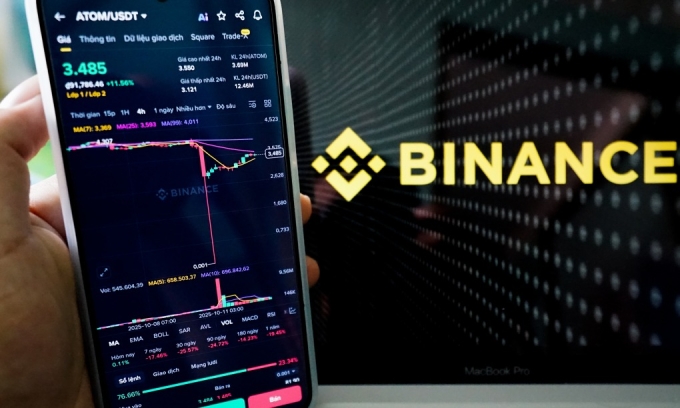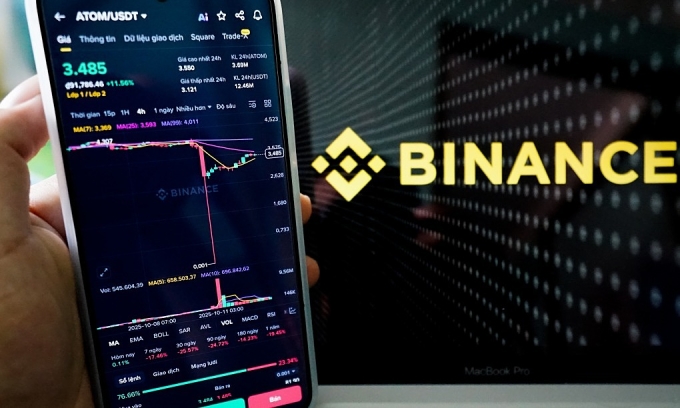According to cryptocurrency price and market data platform CoinMarketCap, on Binance, the world’s largest crypto exchange , several altcoins, or non-Bitcoin cryptocurrencies, such as Cosmos (ATOM), IoTeX (IOTX), and Enjin (ENJ) plunged 99-100% within minutes on Oct. 11.

The cryptocurrency ATOM lost nearly all its value in just minutes during the Oct. 11, 2025 market crash. Photo by VnExpress/Bao Lam
Binance said Bitcoin fell 15% on its platform from US$124,000 to US$105,000.
This is the sharpest cryptocurrency downturn since the collapse of Binance’s rival FTX in 2020, with a loss of US$850 billion in market value within a few hours.
On other exchanges, ATOM fell 53%, while IOTX and ENJ dropped 46% and 64.5%. Stablecoins USDE, BNSOL and WBETH also depegged, meaning they lost their intended fixed value against another currency.
The crash caused heavy losses for traders using borrowed funds, or leverage, and those borrowing USDE, BNSOL and WBETH as collateral were also affected.
Data from crypto publication CoinTelegraph showed nearly US$20 billion worth of crypto positions were liquidated in last week’s crash, 20 times more than during the 2020 crash. Over 1.6 million investors, mostly on Binance, were affected.
Arthur Hayes, co-founder of crypto exchange BitMEX, said Bitcoin’s sharp decline triggered a wave of sell-offs among investors.
He said major exchanges, including Binance, were “liquidating collateral tied to cross-margin positions,” which exacerbated the situation.
He said as prices dropped Binance automatically sold altcoins used as collateral to cover losses, creating more selling pressure and accelerating the fall.
When prices plunged further, Binance’s trading system became overloaded. Users reported frozen accounts, ignored or removed stop-loss orders and delayed transactions. Large withdrawals by major holders added to the pressure.
“When there were no buy orders for a few moments, the system showed some token prices as zero even though they still had value elsewhere,” Hayes said.
In a blog post on Monday, Binance said the incident was caused by a brief technical issue in its platform module that led to sharp price drops in some tokens. It cited factors such as historical limit orders being triggered by one-sided liquidity and zero prices being a display error.
Binance said it would take responsibility and compensate affected users $283 million, paying them in two phases. But it did not disclose how they will receive the funds.
Binance CEO Richard Teng wrote on X: “I apologize to those affected. We will not make excuses but will listen, learn, and improve.”
Flash crashes have occurred before on crypto exchanges. In 2017 Ethereum briefly fell from $317 to $0.1 on GDAX after a series of automated sell orders.
